Science is poetry of reality. Everything around us has a scientific explanation to it. Science has a lot of amazing phenomena happening every second of the day. Just as you are reading this article right now, a lot of reflection and refraction is taking place around you.
Since the word refraction has been mentioned above, let’s dig a bit deeper into this mind-blowing topic.
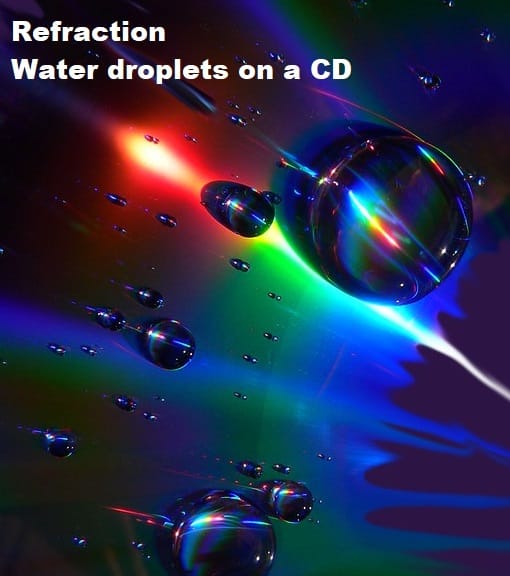
Refraction, in physics, is a phenomenon of change in the direction of a wave from the gradual change in the medium it is traveling. This phenomenon is the most commonly observed phenomenon for light waves but sound waves and water waves also experience this phenomenon equally.
Refraction of light
We can observe this phenomenon of light in our everyday life, in our everyday chores. The objects under any water surface appear to be uplifted due to this phenomenon.
Whenever a light ray is traveling at an angle from a medium of low-density to another medium of high-density, the speed and direction of the light wave change i.e the wave is being refracted.
To trace the parts of the ray and to develop a relationship between the incident angle and refraction the use of formula derived from a law called Snell’s law. It says that the ratio of sines of the incident angle and refraction is equal to the ratios of the indices of refraction.
Refractive index
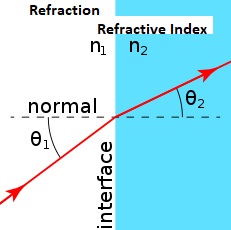
The ratio of the speed of light in a vacuum to the speed of light in the material medium is called the refractive index of the material medium.
The change in the speed of the wave and its initial direction of propagation relative to the direction of speed change tells us how much of a wave has been refracted.
Examples of Refraction Of Light
- When we put a pencil in a glass we see a breaking point of the pencil at the surface of the water in the glass. Did the pencil break in real? No, we tend to see this because of the phenomena of refraction of light occurring on the surface of the water.
- A coin placed in a glass full of water always appears to have risen than its actual place.
- Twinkling of stars
-
Dispersion
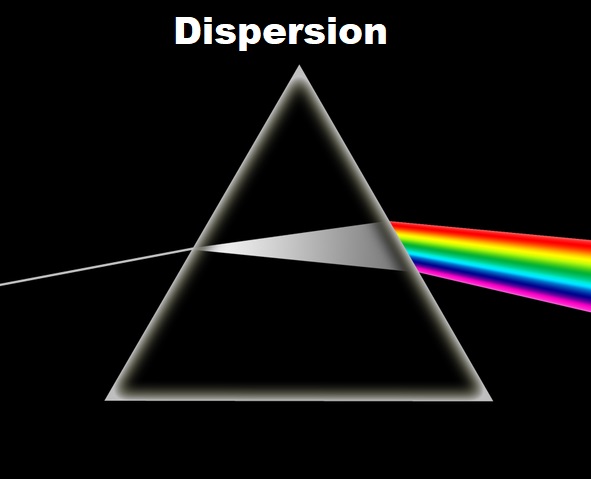
Dispersion means distribution. Dispersion of light is the phenomena of scattering of white light into its 7 component colors ( violet indigo blue green yellow orange and red) at various frequencies and wavelengths when passed through a prism.
A transparent refracting device having 5 plane surfaces in the client at some angles a prism when is the light passing through it twice. The emerging re is at an angle to the incident ray.
-
Lens
A transparent glass bounded by two spherical surfaces passing through which light rays refract is called a lens.
There are two types of lenses.
Convex lens:- bulging out from the center
Concave lens:- thin from the center
Rules for the refraction of a converging lens
1. When an incident ray is traveling parallel to the principal axis it is reflected by the lens and have to pass through the focal point lying at the opposite side of the lens.
2. When an incident ray is traveling through the focal point it will be reflected by the lens and have to pass parallel to the principal axis.
Rules for the refraction of a diverging lens
1. When an incident ray travels parallel to the principal axis it will be reflected and have to travel in a line passing through the focal point.
2. When an incident ray travels towards the focal point it will be reflected by the lens then traveling parallel to the principal axis.
The common rule for both lenses
1. When an incident rays is passing through the center of the lens it continues to move in the same direction.
-
Clinical significance
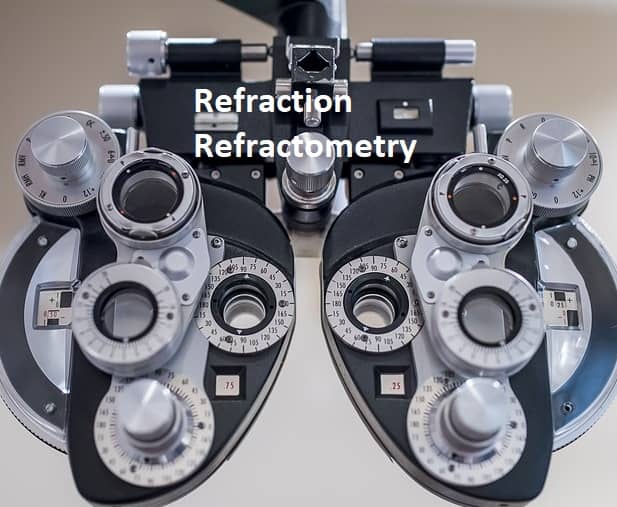
The refraction of light has its roots deep in the medical field. Optometry, Ophthalmology, and Orthoptics use refraction (particularly called refractometry), as a clinical test which includes the use of a phoropter by an eye care specialist for determination of eyes refractive error and then the corrective lenses are prescribed.
-
Atmospheric Refraction
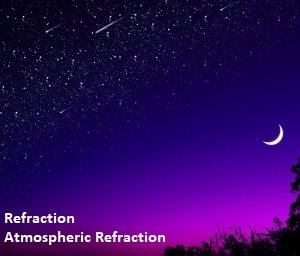
Depending on the air density, the refractive index of air changes with temperature and pressure. At higher altitude, the refractive index is low because the pressure is less which causes the refraction of light rays advancing long distances past the atmosphere to the Earth surface.
This results in a slight shift in the apparent position of the stars. the variation of temperature in the air causes a refraction of light. The visible heat haze occurring by the mixing of hot and cold air over a fire or in engine exhaust is also an example of this phenomenon.
Laws of refraction of light
•The incident ray reflected ray and therefore the normal, to the interface of any two given mediums; all dwell an equivalent plane.
• The ratio of the sine of the angle of incidence and sine of the angle of refraction is constant.
Refraction in water waves
The continuous change in the direction, speed, and wavelength of waves traveling through one medium to another is called refraction in water waves. The property of the material in which the wave is traveling is responsible for the speed of the wave.
For water wave refraction the water waves interrelate with the seabed in order to slow down propagation velocity as a function of wavelength and period.
Thus, water wave travels lower in shallow water than the deep water which can be used to explain refraction in ripple tanks.
Acoustics
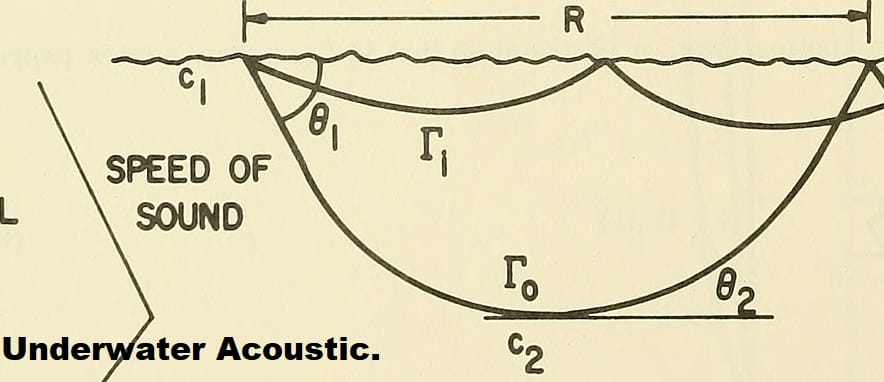
The bending of sound rays while passing through a sound speed gradient into two mediums of different sound speeds is called the refraction of sound in underwater acoustic.
No wonder Science is a blessing for the human race. Learning Science is art. Science has an explanation for all the possible and impossible things happening around us. Science is not just a subject, Science has a lot of beauty in it, we just need the patience and dedication for it.
Very informative
An amazing .. useful and informative article …keep it up
Looking great work dear, I really appreciated to you on this quality work. Nice post!! These tips may help me for future.
this is very good
amazing
amazing